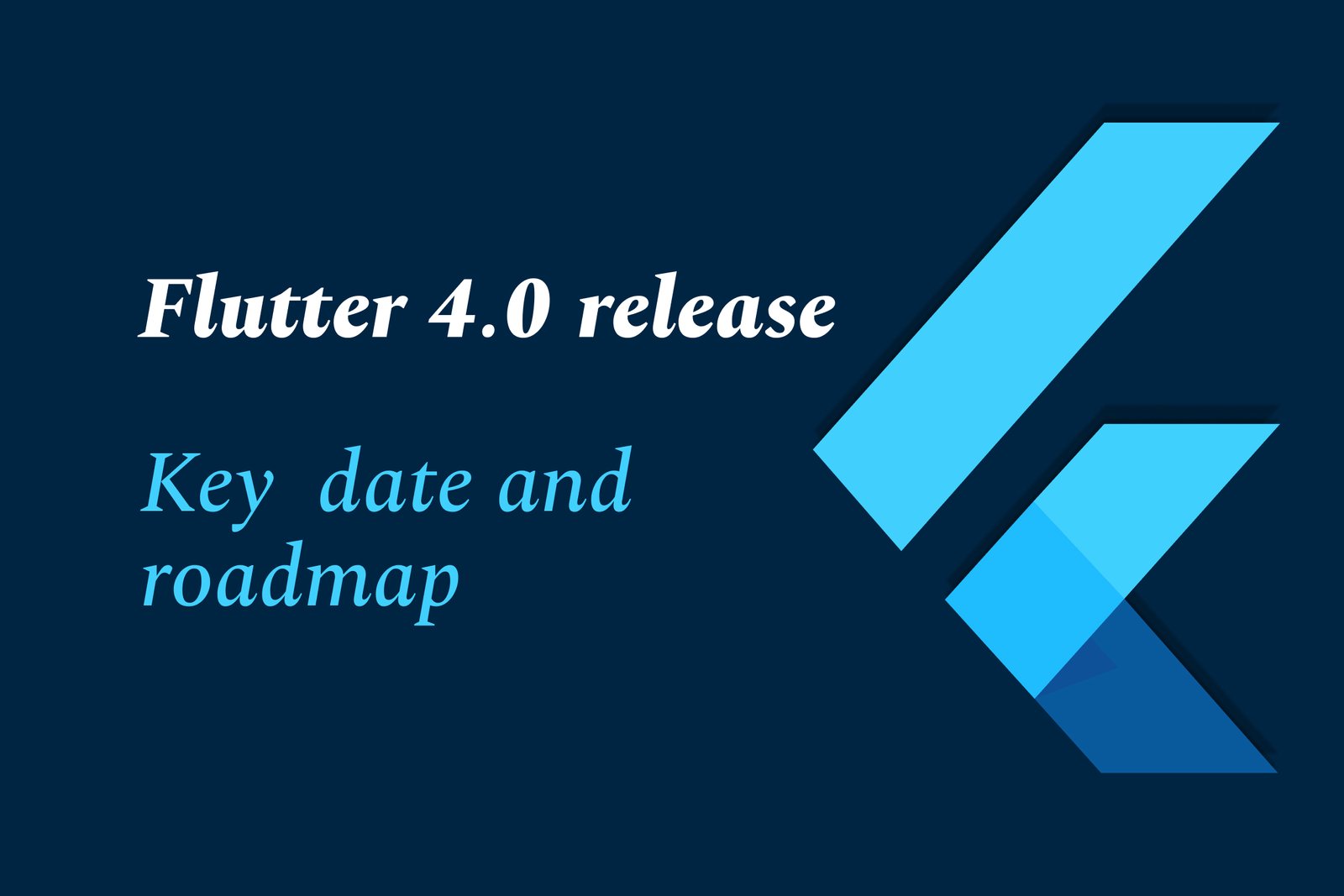Flutter 4.0 Release Date and Roadmap
Flutter 4.0, expected in 2025, brings major upgrades like a faster rendering engine, improved performance, Material Design 3 support, enhanced accessibility, and stronger desktop/web integration—paving the way for smoother, more versatile cross-platform app development.
Flutter 4.0 Release Date and Roadmap
1 ) Overview of Flutter 4.0 Progress and Expectations
Flutter continues rapid growth as a versatile UI toolkit for mobile, web, and desktop.
Flutter 4.0 aims to enhance cross platform app development with major updates in performance, user experience, and tooling.
Official release date is yet to be announced but anticipated in 2025.
2 ) Key Features and Improvements in Flutter 4.0
New Rendering Engine: Designed for faster, more efficient rendering resulting in smoother animations and improved app performance.
Improved Performance: Optimizations include faster app startup times, reduced memory usage, and smaller app binary sizes across platforms.
Enhanced Accessibility: Expanded support for accessibility features, including compliance with Microsoft 11 accessibility standards for better usability.
Material Design 3 Integration: Full support and updates for Material Design 3 components with redesigned BottomAppBar, Drawer, and new Segmented Button for improved navigation and filters.
Segmented Button Component: Simplifies the creation of interfaces requiring segmented option selection, useful for calendars and search filters.
Updated BottomAppBar and Drawer: Inline Floating Action Button (FAB) and updated notch shapes following Material 3 guidelines improve UI consistency and user navigation.
3 ) Cross Platform Performance Refinements
Better native platform integration via enhanced platform channels to reduce custom code.
Further optimization of the Skia based rendering engine for faster frame rates and fluid animations.
Modular architecture contributes to reduced app sizes for mobile, web, and desktop.
4 ) Desktop Support Enhancements
Deeper platform specific API integration for macOS (accessibility), Linux (Wayland), and Windows (WinUI, Fluent design).
Native UI components including menus, system trays, context menus, and draggable windows.
Refined keyboard and pointer interactions targeting productivity and enterprise grade desktop applications.
5 ) Web Support Improvements
Faster initial load times focusing on Progressive Web Apps (PWAs).
Enhanced rendering pipeline using CanvasKit and DOM modes for smoother graphics.
Responsive layout tool improvements enabling adaptable UIs across devices.
6 ) Development Tooling Upgrades
Improved debugging tools for identifying performance bottlenecks like memory leaks and unnecessary widget rebuilds.
Enhanced hot reload and restart functionality with increased speed and stability.
Better integration of DevTools with CI/CD pipelines and cloud monitoring for streamlined performance profiling.
7 ) Current Market and Adoption Insight
Despite Flutter’s maturity over four years, professional job offerings remain fewer compared to other development frameworks.
Flutter developers presently receive comparatively lower pay, indicating room for growth in industry adoption.
Summary: Flutter 4.0 promises comprehensive enhancements in rendering, performance, accessibility, and Material Design 3 UI elements, alongside stronger desktop and web support. These advancements will empower developers to build high performance, visually rich, and accessible cross platform applications. While official launch timelines remain unconfirmed, the expected 2025 release is highly anticipated by the community.
https://justacademy.in/news-detail/flutter-web-is-now-production-ready:-key-announcements
https://justacademy.in/news-detail/breaking-changes-in-latest-flutter-version
https://justacademy.in/news-detail/flutter-roadmap-beyond-2025
https://justacademy.in/news-detail/using-google’s-vertex-ai-with-flutter-apps
https://justacademy.in/news-detail/why-flutter-developers-are-in-high-demand-in-india
Related Posts
In 2025, top Angular libraries offer modern, feature-rich components and tools for building dynamic web apps. From powerful data grids to low-code platforms like UI Bakery, these libraries enhance development speed, UI design, and scalability, making them essential for Angular developers.
Migrating from AngularJS to Angular 17 involves gradually upgrading your app by running both frameworks together using tools like ngUpgrade, rewriting components in TypeScript, and adopting Angular’s modern architecture to enhance performance, maintainability, and long-term support.
Angular state management tools help organize and handle app data efficiently, improving scalability and maintainability. Popular options include NgRx for robust, RxJS-based patterns, and newer Signal Store solutions that offer simpler, reactive approaches integrated tightly with Angular’s latest features.
RxJS in Angular empowers developers to manage asynchronous data streams with powerful operators like `forkJoin`, `combineLatest`, and `zip`. Mastering these key operators in 2025 is essential for building efficient, reactive applications that handle complex event sequences seamlessly.
Angular performance optimization in 2025 focuses on improving app speed and responsiveness by using techniques like OnPush change detection, lazy loading, efficient data caching, and AOT compilation. These practices reduce load times, enhance user experience, and ensure scalable, fast Angular applications.
In 2025, Angular remains preferred for large-scale, enterprise apps with its robust, all-in-one framework, while Vue attracts developers seeking simplicity and fast development for smaller projects. Both frameworks excel, with choice driven by project needs and team expertise.
Angular Signals are a new reactive primitive in Angular 16 that enable fine-grained, efficient change detection by automatically tracking dependencies and updating only affected parts of the UI. They simplify state management and boost app performance, revolutionizing Angular's reactivity model.
Angular interview questions to prepare in 2025 focus on core concepts like components, directives, data binding, routing, and dependency injection, along with TypeScript mastery and latest Angular features to ensure strong practical knowledge for building scalable, efficient web applications.
AngularJS reached its official end of support in January 2022, meaning no further updates or security patches. To ensure app security and performance, developers should consider migrating to modern Angular versions or seek third-party long-term support options if immediate migration isn’t possible.
The Angular Roadmap 2025 highlights upcoming features focused on improving developer experience and performance, including zoneless Angular, Signals integration, enhanced Forms, async data handling, improved HMR, and expanded Angular Material/CDK enhancements, driving modern, efficient web app development.










